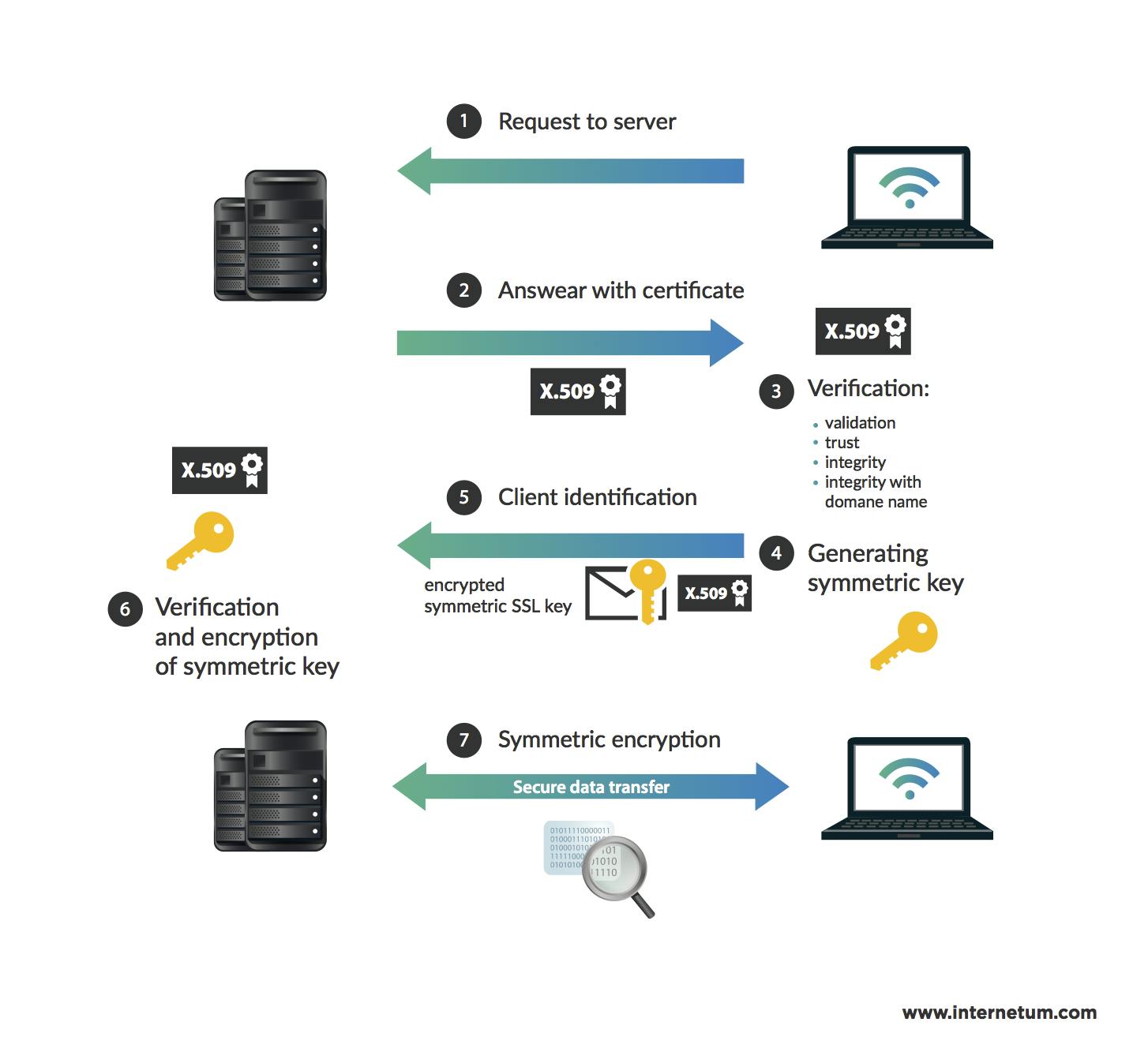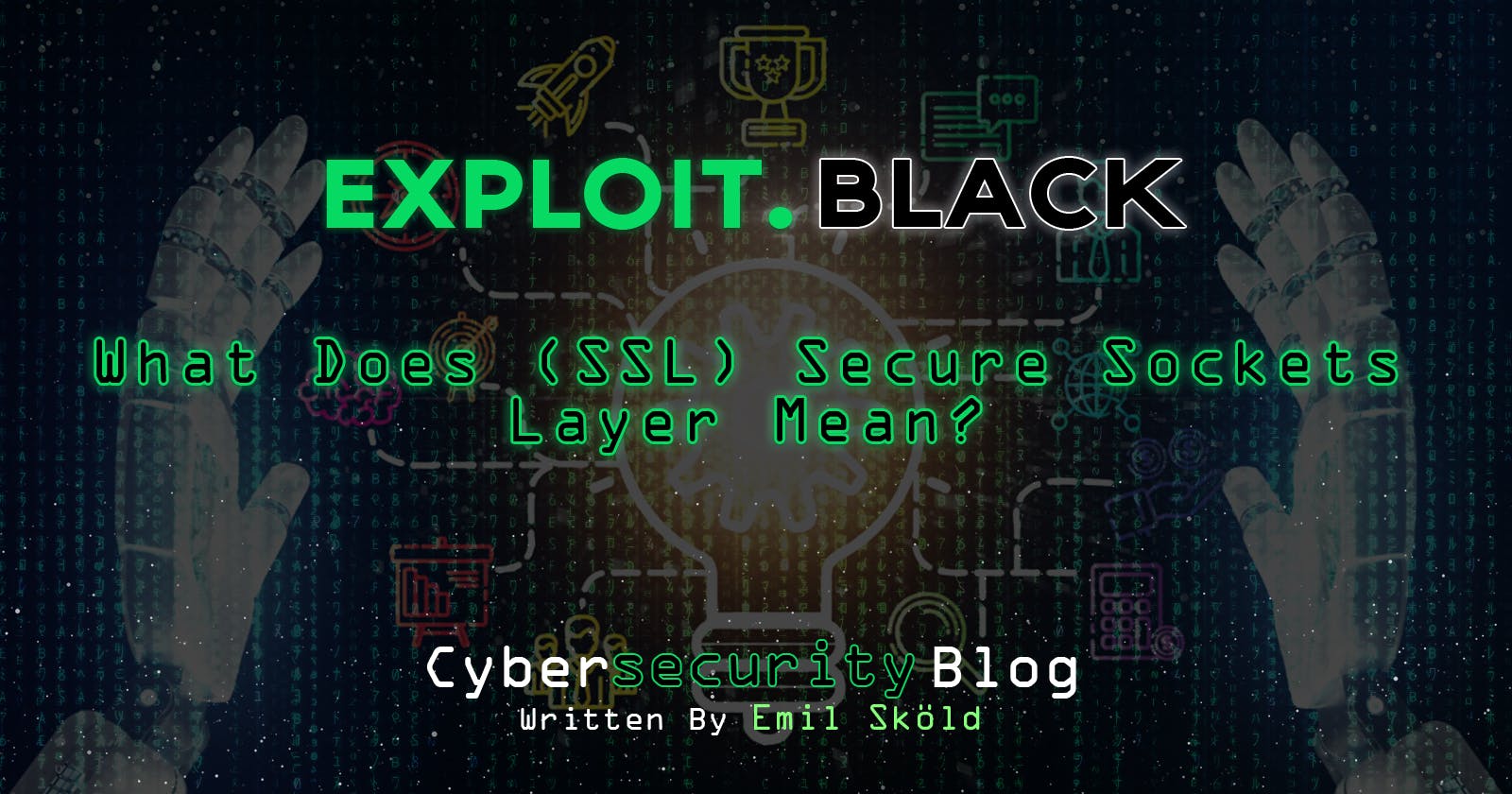
What Does (SSL) Secure Sockets Layer Mean?
SSL (Secure Sockets Layer) and its successor, TLS (Transport Layer Security), are protocols for establishing authenticated and encrypted links between networked computers.
The Most Common and Well Known Use of SSL/TLS Is Secure Web Browsing via the HTTPS Protocol.
SSL certificates create a foundation of trust by establishing a secure connection. Customers are more likely to complete a purchase if they know your checkout area is secure. English is the official language of our site, but we don't promise that Google's translation will be accurate or complete.
Secure Sockets Layer (SSL) Is a Standard Protocol Used for the Secure Transmission of Documents Over a Network.
An SSL certificate is a digital document that binds the identity of a website to a cryptographic key pair consisting of a public key and a private key. Compromising a key exchange allows attackers to completely compromise network security and decrypt conversations.

When Using SSL for Secure Internet Transactions, a Web Server Needs an SSL Certificate to Establish a Secure SSL Connection.
SSL/TLS works by binding identities of entities such as websites to cryptographic key pairs via digital documents known as X.509 certificates. Most of these attacks have been mitigated in TLS 1.2 (provided that instances are configured correctly). Secure web browsing via the HTTPS protocol. A properly configured public HTTPS website includes an SSL/TLS certificate that is signed by a publicly trusted CA.
The Objectives of SSL Are: SSL Is the Predecessor of Transport Layer Security (TLS), Which Is a Cryptographic Protocol for Secure Internet Data Transmission.
Look for the following indicators in your browser's address bar to be sure that a website you are visiting is protected with a trusted SSL/TLS certificate. Secure Sockets Layer (SSL) is a standard protocol used for the secure transmission of documents over a network. SSL technology creates a secure link between a Web server and a browser. In SSL, the word "socket" refers to the mechanism of transferring data between a client and a server.
What Does Secure Sockets Layer (SSL) Denote?
SSL stands for Secure Sockets Layer. | What exactly is an SSL Certificate? How does an SSL Certificate function?
SSL certificates protect connections and establish credibility. Creating a trustworthy environment in which prospective clients feel comfortable making purchases is one of the most vital aspects of internet company. SSL certificates establish a secure connection, so establishing a foundation of trust. To reassure visitors that their connection is safe, browsers display visual cues known as EV indicators, such as a green padlock or a branded URL bar.
Compare TLS/SSL Certificate Uses:
Websites and blogs containing data Even blogs that do not collect payments or sensitive information require HTTPS to protect user privacy.
Login panels & forms TLS/SSL encrypts and protects login credentials and forms used to submit personal information, documents, and photos.
Checkout pages Customers are more likely to complete a transaction if they believe the checkout process (and the credit card information they provide) is safe.
Type of TLS/SSL Certificate Recommendation OV (Organization Validated) TLS/SSL certificates - The second-highest degree of validity and the second-most stringent organization verification.
OV (Organization Validated) TLS/SSL certificates - The second-highest level of validity and the most stringent organization verification.EV (Extended Validation) TLS/SSL Certificates - The highest level of authenticity and most stringent identity verification. How Does SSL Work? - SSL.com We hope that you find Google's translation service useful, but we cannot guarantee that the translation will be accurate or comprehensive. Google's translation should not be trusted. Our website's official language is English.
We hope that you find Google's translation service useful, but we cannot guarantee that the translation will be accurate or comprehensive. Google's translation should not be trusted. Our website's official language is English.
What exactly is SSL?
SSL and its successor, TLS, are protocols for creating authenticated and encrypted connections between networked computers. Although SSL was deprecated when TLS 1.0 was released in 1999, it is nevertheless popular to refer to these linked technologies as "SSL" or "SSL/TLS." TLS 1.3 is the most recent version, as described by RFC 8446. (August 2018).
SSL and its successor, TLS, are protocols for creating authenticated and encrypted connections between networked computers. Although SSL was deprecated when TLS 1.0 was released in 1999, it is nevertheless popular to refer to these linked technologies as "SSL" or "SSL/TLS."
SSL certificates (also known as TLS or SSL/TLS certificates) are digital documents that connect the identity of a website to a pair of public and private cryptographic keys. The certificate's public key enables a web browser to begin a secure communication session with a web server using the TLS and HTTPS protocols. The private key is stored in a secure location on the server and is used to digitally sign web pages and other documents (such as images and JavaScript files). Additionally, an SSL certificate contains identifying information about a website, such as its domain name and, optionally, information about the site's owner. If the web server's SSL certificate is certified by a publicly trusted certificate authority (CA), such as SSL.com, end users' web browsers and operating systems will recognize digitally signed content from the server as authentic. X.509 certificates include SSL certificates.
In 1999, TLS (Transport Layer Security) succeeded SSL (Secure Sockets Layer) as the protocol for authentication and encryption. TLS 1.3 is specified by RFC 8446. (August 2018).
Historically, each SSL certificate installed on a web server was required to have a separate IP address. No longer the casecase because of Server Name Indication technology (SNI). Your hosting platform must support SNI in particular. This SSL.com article provides additional information regarding SNI.
For optimal compatibility, the suggested SSL/TLS connection port is 443, which is the industry standard. Nevertheless, any port may be utilized.
TLS 1.3, as defined by RFC 8446 in August 2018, is the most recent version of SSL/TLS. TLS 1.2 (RFC 5246) was defined in August 2008 and is still widely utilized. SSL/TLS versions older than TLS 1.2 are unsafe and should no longer be utilized.
In the previous two decades, security researchers have disclosed a huge number of protocol and implementation flaws affecting TLS versions 1.0 and 1.1. Attacks such as ROBOT compromised the RSA key exchange procedure, while LogJam and WeakDH demonstrated that many TLS servers may be duped into employing erroneous parameters for other key exchange methods. Compromising a key exchange enables attackers to entirely breach network security and decode communications. Multiple ciphers allowed in TLS 1.2 and earlier, including RC4 and CBC-mode ciphers, are not safe, as revealed by attacks on symmetric ciphers such as BEAST and Lucky13. Bleichenbacher's RSA signature forging attack and other similar padding exploits attacked even signatures. TLS 1.2 is susceptible to downgrade attacks such as POODLE, FREAK, and CurveSwap, but the majority of these attacks have been neutralized (assuming that TLS instances are configured correctly). Due to the fact that TLS versions prior to 1.3 do not safeguard the handshake negotiation, this is the case (which decides the protocol version that will be used throughout the exchange).
Keys, Documents, and Handshakes
SSL/TLS functions by associating the identities of organizations such as websites and businesses with cryptographic key pairs using X.509 certificates. Each pair of keys comprises a private key and a public key. The private key is protected, but the public key can be freely disseminated using a certificate.
Due to the unique mathematical link between a pair's private and public keys, it is feasible to encrypt a message with the public key that can only be decrypted with the private key. In addition, the owner of the private key can use it to sign other digital documents (such as web pages), and anybody having the corresponding public key can validate this signature.
If the SSL/TLS certificate is signed by a publicly trustworthy certificate authority (CA) such as SSL.com, client software such as web browsers and operating systems will implicitly trust the certificate. Publicly reputable CAMajor software providers have approved s to confirm identities that will be trusted on their platforms. Validation and certificate issuance procedures of a public CA are subject to regular, stringent audits to preserve this status.
Even if two parties have never met, they can negotiate an encrypted and authenticated communication session over the Internet using the SSL/TLS handshake and a certificate that is trusted by the public. This fundamental concept is the backbone of secure web browsing and modern electronic commerce.
The most prevalent and well-known application of SSL/TLS is HTTPS-based secure web browsing. A well setup HTTPS public website includes an SSL/TLS certificate certified by a publicly trustworthy CA. Users of an HTTPS website are guaranteed of the following:
SSL/TLS and HTTPS enable users to securely communicate personal information such as credit card numbers, social security numbers, and login credentials across the Internet while ensuring the authenticity of the destination website. These data are transmitted as plain text on an insecure HTTP website, making them readily accessible to any eavesdropper with access to the data stream. Moreover, consumers of these unprotected websites have no assurance from a credible third party that the website they are visiting is what it claims to be.
Check for the following signs in the address bar of your browser to ensure that a website you are visiting is protected by a valid SSL/TLS certificate (screenshot from Firefox 70.0 on macOS):
Modern desktop browsers also warn users when they visit insecure websites lacking an SSL/TLS certificate. The image below depicts an unsafe website accessed with Firefox, as shown by the broken padlock to the left of the URL:
Are you prepared to secure your website? Following is the fundamental technique for requesting a publicly trusted SSL/TLS website certificate:
Extended validation (EV) SSL/TLS certificates bestow the highest level of confidence. Please refer to our page titled DV, OV, and EV certifications for information on the differences between the major validation methods (DV, OV, and EV).
References:
> DIGICERT - "What is an ssl certificate"
> SSL
> TECHOPEDIA - "Secure sockets layer ssl"


